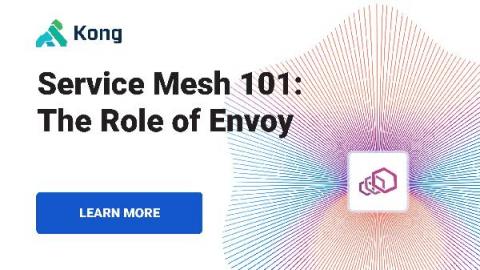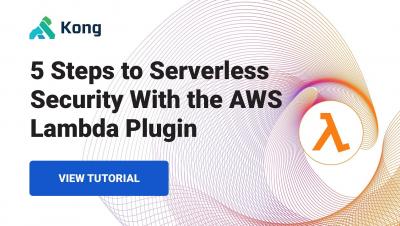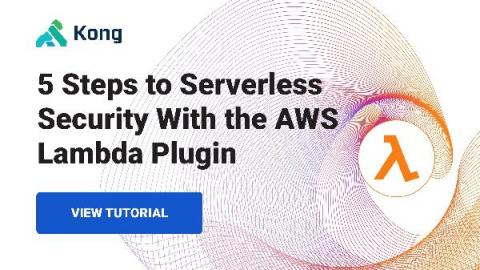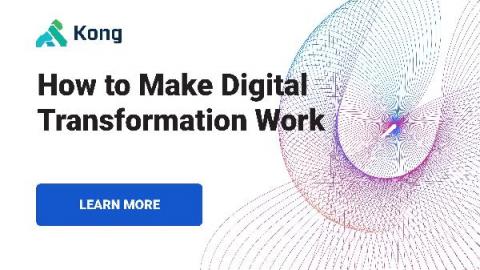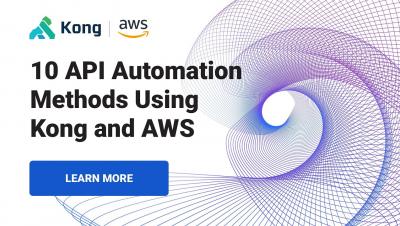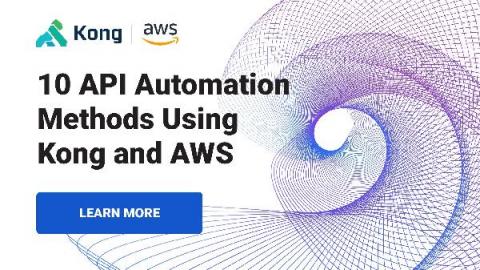Systems | Development | Analytics | API | Testing
August 2021
8 Cloud Cost Optimization Tactics for Kubernetes
If you’ve ever gotten sticker shock after receiving a surprisingly large cloud bill, this might have been your reaction… I think we’ve all been there. While the cloud makes flexible scaling possible, it has also introduced many new services one can use, resulting in increased cloud costs. In this article, I’ll go over the eight ways you can reduce your Kubernetes cloud costs. I use Amazon Web Services (AWS) as an example, but the lessons can also apply to other cloud providers.
Celebrating Four Years of Kong Inc.
What a year we have had! Hypergrowth, a huge community, and lots of recognition. But what we are most proud of is how Kong’s technology has impacted the world, thanks to our users. We can’t thank these users and the community enough for making Kong the most adopted open source API gateway out there. In fact, our technology just crossed 30,000+ stars on Github . And with over 2M instances and more than 257M downloads our OSS community has more than doubled over the last year.
Service Mesh 101: The Role of Envoy
If you’ve done any reading about service meshes, you’ve probably come across mentions of an open source project named Envoy. And if you’ve done any reading about Envoy, you’ve probably seen references to service meshes. How are these two technologies related? How are they different? Do they work together? I’ll attempt to answer all those questions in this blog post’s first and second parts, plus possibly a few more.
Kuma 1.3 and Kong Mesh 1.4 Released With Service Map, CA Rotation, mTLS Permissive and 10+ features.
We are happy to announce a new major release of Kuma, and a new major release of Kong Mesh built on Kuma! Kuma 1.3 ships with 10+ new features and countless improvements. Kong Mesh ships we enterprise capabilities for large scale service mesh deployments. We strongly suggest to upgrade, in order to take advantage of the latest and greatest when it comes to service mesh.
How to Leverage Insomnia as a GraphQL Client
How to Leverage Insomnia as a GraphQL Client
Here at Kong, we’re advocates for architecting your application as a group of microservices . In this design style, individual services are responsible for handling one aspect of your application, and they communicate with other services within your network to share data. Systems like Kubernetes or the Kuma service mesh help orchestrate traffic and manage network policies so that your microservices can function together as a unified whole.
Kong Gateway Request & Response Transformation Plugins | #KongBuilders - August 20
DevOps Is More Than Configuration Management
My DevOps Journey Beyond Configuration Management
For most of my software engineering career, my experience with DevOps was all about configuration management. But after many years of experience with some key mentors, I began to see DevOps as so much more. In this article, I’ll summarize my DevOps evolution from a high level. If you’d like to go further in-depth, check out the recording from my Destination: Automation presentation below.
Balancing Innovation and Security With Automation [Destination: Automation]
Serverless Security With Kong's AWS Lambda Plugin
5 Steps to Serverless Security With the AWS Lambda Plugin
For the DevOps-averse developer, lambdas are heaven. They can focus on writing self-contained and modularized pieces of code, deploying these functions for on-demand execution without being concerned about resource management or infrastructure. Lambda execution , however, can be tricky. Serverless security with the AWS API Gateway can feel daunting, especially when all you want to do is call a simple function as an API endpoint. For this, there’s the ease of Kong Gateway .
Balancing Innovation and Security With Automation [Destination: Automation]
How to Make Digital Transformation Work
The best way to appreciate key concepts involving digital transformation is to look at real-world examples. In a recent Kong webinar, I sat down with Solutions Engineer Ahmed Koshok as he reviewed several real-world case studies that help illuminate the role of microservices in making digital transformation successful for organizations. The case studies included Papa John’s, NextJ Systems, and Yahoo! Japan.
API Automation with Kong and AWS
10 API Automation Methods Using Kong and AWS
Apps of today differ from those of the past. Evolving organizations like Cargill need to scale quickly to support millions of users, have global availability, manage petabytes or more of data and respond in milliseconds. That’s why modern apps now leverage API automation.
Fireside Chat: Zero Load Balancing
Kong-plement Your ServiceHub With a Developer Portal
Two of the best (in my opinion) features in Konnect are the ServiceHub and Developer Portal. However, they’re also two of the most misunderstood. Aren’t they the same thing? Why would you need a ServiceHub vs. Developer Portal? Well, I’m glad you asked! The really quick version is that ServiceHub is like your warehouse, where all your products are stored. It’s a comprehensive collection of everything that you have. Your Developer Portal is more like your storefront.
Minimizing Security Risks in APIs and Microservices
Application Programming Interfaces (APIs) and microservices are the foundational pillars of digital transformation initiatives. They simplify the development process for our technology teams, enabling them to innovate faster, increase customer engagement and boost business agility. However, while this transformation of business digitally opens doors to limitless opportunities, it also opens doors to many challenges – with one of the most significant challenges being security.
Kong Gateway 2.5 Now Generally Available!
Today, we are proud to announce the general availability (GA) of Kong Gateway 2.5! Below, we’ll dive deeper into some of the new features and capabilities this release brings. Be sure to upgrade or try out a fresh install today! 2.5 compatible releases will be available with Konnect, our SaaS platform, shortly!





